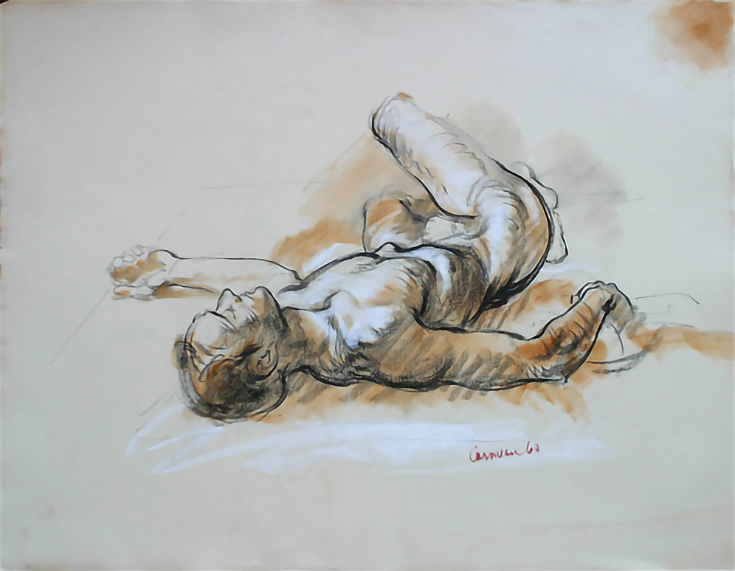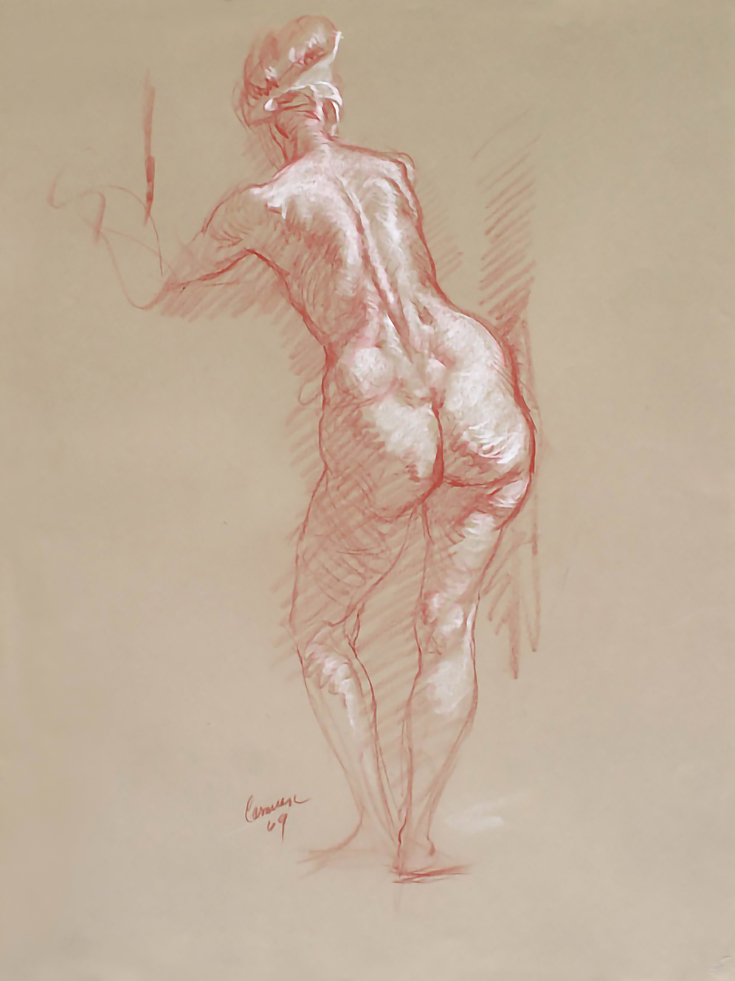Over the last twenty-five years I have spent my fair share of time drawing and studying the human figure. As a result, I’ve come across some of the same figure-drawing mistakes over and over again.
Like any other art process, figure drawing is a fluid activity and impossible to pin down with exact rules—but if your goal is to create a more convincing life drawing, then these next few ideas will certainly help.
My 9 solutions to common figure-drawing mistakes:
Mistake #1 – Drawing without a goal in sight
More often than not, people immediately begin sketching without establishing some kind of intention in their mind first. You’ll find that a well-thought out drawing always seems more focused, and clearer than one that doesn’t.
Solution: Pause for a moment before beginning your drawing and look at what you see in front of you. Keep your mind open for ideas to pop up—a moment of reflection and stillness will allow creative ideas to reveal themselves. Once you have a plan, begin drawing!
Mistake #2 – Failing to keep the figure on the page
It’s always shame when heads, arms or feet get unintentionally cut out of a drawing, just because the artist has run out of room on the paper.
Solution: Sketch in the underlying body structure first, before committing to the entire drawing. Be sure to mark where the top of the head and the bottom of the feet will go in your initial rendering, along with some extra space for the margins. Especially if there’s foreshortening going on, your eye may be fooled unless you take the time to measure and mark.
Mistake #3 – Creating stiff-looking, robotic figures
Angles in a figure drawing are very important because they show us how much the model is leaning, where their weight is resting, and the extent of their range of motion. We tend to straighten out our figures unconsciously and must deliberately compensate for it. Because most people aren’t aware of this tendency, the problem never gets addressed resulting in a stiff, robotic figure.
Solution: Start drawing the curves and angles of your model just as you see them, but then exaggerate the angles further to compensate for your innate tendency to straighten things.
The effect is that your drawing will appear to be more accurate. You have to go out of your comfort zone and force things a bit, but to the viewer the drawing will look even more believable.
Mistake #4 – Equalizing the proportions of model
Irregular proportions are the norm. Nothing is truly equal or symmetrical in nature, even though it may appear that way upon first glance.
Solution: Observe something very, very closely and you will see the many uneven proportions that you didn’t see the first time around. Just being aware of them is already a step in the right direction and will help the quality of your drawing.
It may also help to measure the length of various anatomical proportions on the model and compare them what you have drawn—you will inevitably find places where you have “equalized” measurements that need to be changed.
The good news is, irregularities are what make the drawing interesting. . . nature and life are full of surprises, so your drawing should be as well!
Mistake #5 – Ignoring the figure’s environment
In life drawing, figures can easily appear to be cut out or “floating” in space. This is quite distracting, no matter how well-drawn the image is.
Solution: Include a bit of the environment in the drawing. The smallest line can help the figure look more solid and more grounded.
In the example above, there’s a few small horizontal lines under the back heel to suggest the floor. Smudges and scribbles done outside of the figure suggest the space that it is inhabiting—it’s as simple as that and works like a charm!
Refer to the old masters for more ways to integrate a figure and environment.
Mistake #6 – Working on the details too soon
It is very easy to get lost in the details, but all that work goes to waste unless you have the proper larger forms in first. The temptation is to start “finishing” off the drawing too fast, resulting in some beautifully rendered areas that have to be erased later.
Solution: Get the drawing laid in correctly from the start, always remembering to work from large to small. The main forms go in first, followed by the details that can be considered icing on the cake.
Mistake #7 – Expecting the model to be “perfect”
You will often end up with a model that moves around a bit, gives you a difficult foreshortened poses, or doesn’t have the appearance you are looking for.
But believe it or not, the success of your drawing has very little to do with the model and everything with you, the artist.
Solution: It is your job to bring the beauty, proportion, and interest to the model in front of you, and not the other way around. You can make a model into whatever you desire with some creativity—do not rely on the model for your inspiration. Picasso is an excellent example of an artist who could take an ordinary model and turn her into a compelling work of art.
Of course, some models have indeed do have a special quality and can be so wonderful you can’t help but do one of your best drawings. But you shouldn’t rely on having a perfect model to make a successful drawing—you can do it anyway regardless of what you see before you.
Mistake #8 – Not spending time on hands and feet
Both beginners and professional artists have trouble drawing hands and feet. If you actually take the time to make the hands and feet as good as the rest of the drawing without fudging or trying to cover them up—well, then you are in the top ten percent!
Solution: Work longer on the hands and feet and study them thoroughly. Drawing from the old masters (who offer many solutions) will help. Also, draw and redraw the hands and feet until they appear to be done with ease.
All of this will take time, but it’s more than worth the extra effort. A great work of art is like a chain: it is only as good as its weakest link. If you “screw up” on one part (i.e. the hands and feet) it will weaken the entire work.
Mistake #9 – Thinking that you have learned enough
In art as in life, ideas unfold as you progress. As Picasso once said, “Success is dangerous. One begins to copy oneself, and to copy oneself is more dangerous than to copy others. It leads to sterility.” Picasso was a master at reinventing himself and his art. From his Blue Period to Guernica, every painting was a brand new experience for his viewers.
Solution: Make a decision now to keep learning, and to keep your mind open for new ideas. Forget being “right” all the time. Instead, search for new artistic discoveries and always look for ways to learn from your mistakes.
Special thanks to Miriam Slater for sharing these tips! The two life drawings above are by figurative artist Harry Carmean, and are excellent examples of “mistake free” life drawings.
This post may contain affiliate links.


